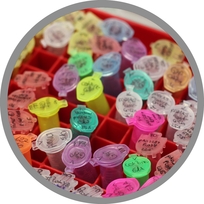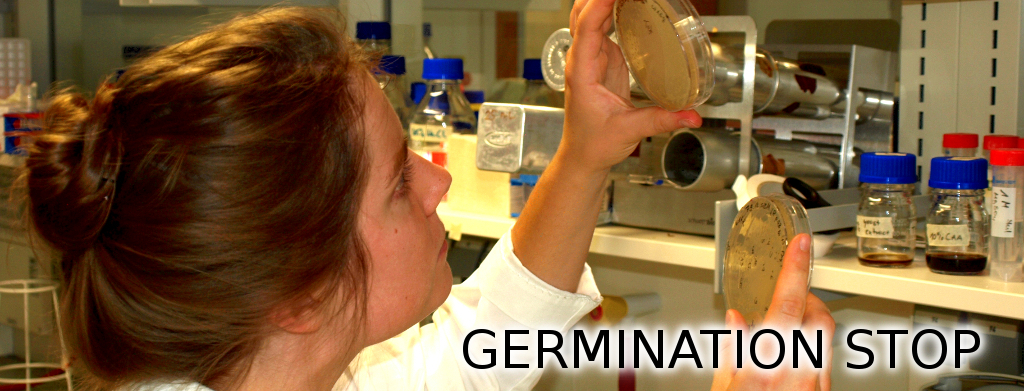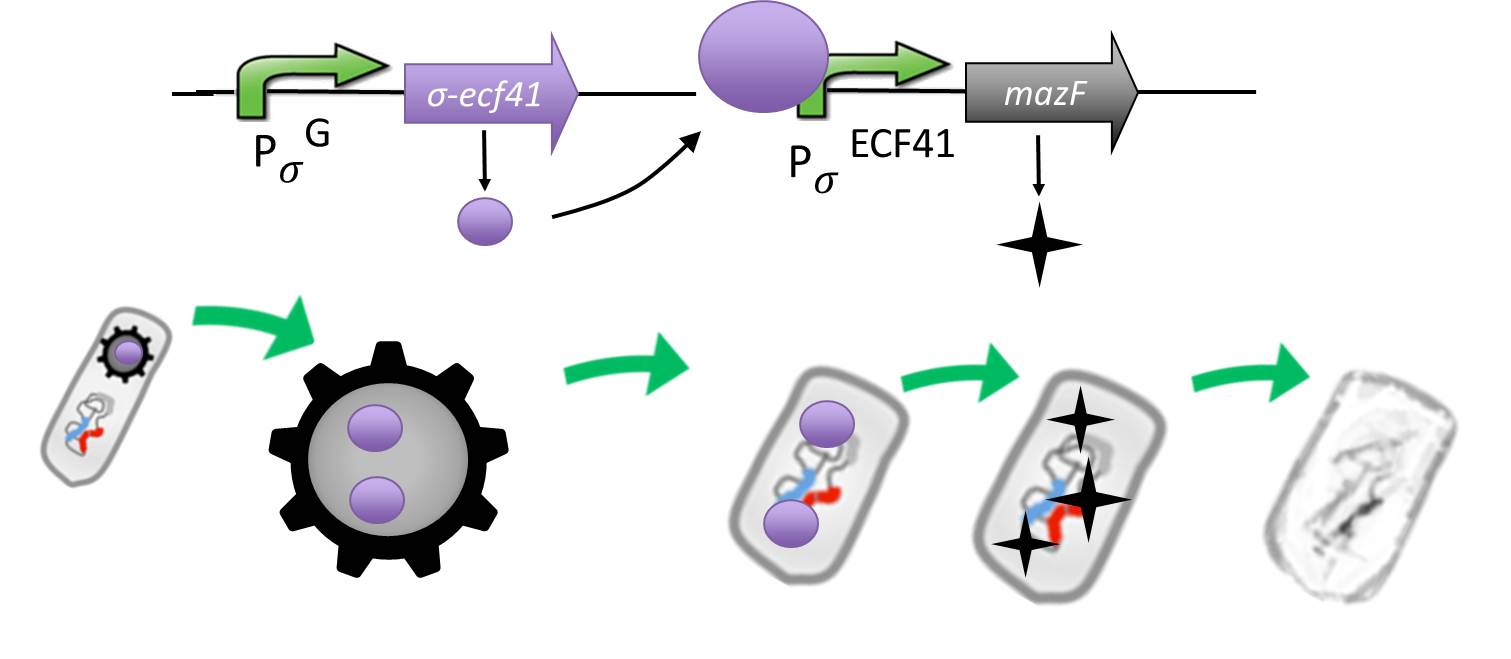Team:LMU-Munich/Germination Stop/SuicideSwitch

The LMU-Munich team is exuberantly happy about the great success at the World Championship Jamboree in Boston. Our project Beadzillus finished 4th and won the prize for the "Best Wiki" (with Slovenia) and "Best New Application Project".
[ more news ]



Suicideswitch
|
As a backup plan to make our Sporobeads even safer, we developed the Suicideswitch. In case the spores do germinate, due to degradation or destruction of their outer coats, e.g. by high pressure, the Suicideswitch will be turned on.
We take advantage of an alternative and heterologous σ factor and the target promoter. Both are not present in B. subtilis and therefore not recognized by any other σ factor of B. subtilis.
The alternative sigma factor [http://partsregistry.org/wiki/index.php?title=Part:BBa_K823043 ecf41Bli aa1-204] ([http://www.ncbi.nlm.nih.gov/pmc/articles/PMC3426412/ Wecke et al. 2012]), which derives from B. licheniformis a truncated version constitutively "ON" is synthetically linked to one out of two σG-regulated promoters ([http://partsregistry.org/wiki/index.php?title=Part:BBa_K823048 PspoIVB] ([http://www.ncbi.nlm.nih.gov/pubmed/15699190 Steil et al. 2005]) responding strongly or [http://partsregistry.org/wiki/index.php?title=Part:BBa_K823042 PsspK] ([http://www.ncbi.nlm.nih.gov/pubmed/15699190 Steil, Völker et al. 2005]) responding weakly). σG is the last σ factor activated in the forespore. Consequently, Ecf41Bli aa1-204 is produced quite late and only in the forespore. Ecf41Bli aa1-204 then activates its unique target promoter [http://partsregistry.org/wiki/index.php?title=Part:BBa_K823041 PydfG] ([http://www.ncbi.nlm.nih.gov/pmc/articles/PMC3426412/ Wecke, Mascher 2012]). This promoter is fused to [http://partsregistry.org/wiki/index.php?title=Part:BBa_K823044 MazF] ([http://jcs.biologists.org/content/118/19/4327.abstract Engelberg-Kulka, Amitai 2005]). Activation of PydfG therefore leads to the expression of MazF, a bacterial toxin from E.coli degrading mRNA.
The resulting time course of expression is as follows: Sporulation of the Sporobeads leads to Ecf41Bli aa1-204 production in the forespore at the end of the differentiation cycle, through the activation of either PspoIVB or PsspK. Subsequently, this would lead to the expression of MazF, due to the activation of PydfG. For our already matured Sporobeads, this would not be toxic, as they represent a dormant state that does not require translation any more. But in the case that a Sporobead escapes the GerminationSTOP based on the gene knockouts described above, a germinating cell will already contain or soon start producing MazF and therefore kill the vegetative cells.
See what Data we got when measuring a module with luxABCDE instead of MazF.
We are planning to model this system, but still need more quantitative, time-resolved data for it. We hope to get this data after finishing the cloning of PsspK and MazF into B. subtilis.
 "
"




